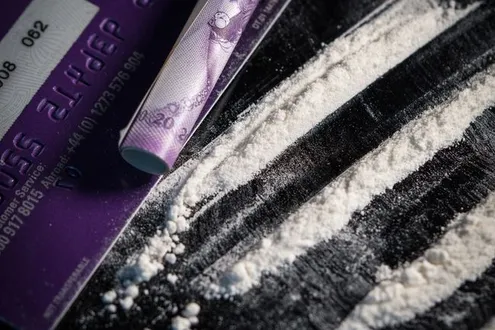Tramadol addiction is complex and overcoming it takes more than willpower. Repeated drug use leads to changes in the brain that challenge self-control. Tramadol is often prescribed for pain management but can be used to treat anxiety.
Drugs, like tramadol, affect the brain’s reward system by creating dopamine-induced feelings of euphoria. Surges of dopamine reinforce pleasurable behaviours and encourage repetition, even if the activity is unhealthy. Over time, the brain adapts and the reward system becomes less responsive. This effect is known as tolerance. The high felt initially becomes much less intense with repeated drug use. To recreate it, increasing quantities of tramadol need to be consumed. Someone in this stage of addiction will need to undergo detox from Tramadol.
Once someone becomes addicted to tramadol, getting hold of it becomes all-consuming.
Why is Tramadol Addictive?
While it is generally considered to be less potent than other opioids, it still carries a significant risk of addiction. If a person suddenly stops taking Tramadol, they may experience withdrawal symptoms such as anxiety, sweating, nausea, tremors, and muscle pain. These withdrawal symptoms can be uncomfortable and may drive continued use of the drug to avoid them.
If you are worried that your loved one has developed a dependence to prescription drugs such as Tramadol contact us for a free assessment.

Tramadol is one of the least potent opiates. As such, many people believe it’s not addictive. Even when the drug is used under medical supervision however, users can experience adverse reactions.
Using tramadol without a prescription or taking it in higher and more frequent doses than prescribed, can be dangerous and puts the user at risk. In some cases, even people who adhere to their prescription can become addicted to the drug.
After prolonged tramadol use, people may develop a tolerance and need to take more of the drug to feel its effects. They may also start to mix tramadol with other substances or graduate to harder painkillers or illicit drugs.
Over time, the brain and body adapt to function with tramadol in your system and if you try to quit, you may experience unpleasant withdrawal symptoms, such as irritability. Many people end up caught in a cycle of abuse trying to avoid these symptoms.
While considered to have a relatively low potential for abuse and addiction, problems with tramadol do nevertheless occur. When taken in high doses or mixed with other substances, tramadol can cause serious problems.
With prescription medication, there is a fine line between use and abuse and many people may end up abusing tramadol without realising. Tramadol binds to specific opioid receptors which can bring much needed relief from discomfort.
Environmental Factors
While many cases of tramadol addiction have occurred in people who are already dependent on illicit substances, dependence is rising in those without prior substance abuse history.
There are factors at play however, that may influence the likelihood of becoming addicted to tramadol. Spending time around people who abuse drugs can be influential. Parental guidance also plays a big part in the likelihood of someone developing an addiction. Children who are exposed to drug abuse at a young age are more at risk of developing their own problem later in life.
Peer pressure can result in recreational drug use and teens are especially prone to engaging in risky behaviours, as the areas in their brains that control judgement and self-control are still developing.
Psychological Factors
Different psychological factors can increase the risk of substance misuse. Drugs are often used to suppress emotional stress and relieve the symptoms of a range of mental health issues. Repeatedly turning to tramadol to ease emotional pain or trauma increases tolerance. Over time, self-medicating in this way can become habitual and co-occur with a mental health disorder or poly-substance abuse.
Genetic Predisposition
While some people may be able to use tramadol appropriately, others will feel a strong impulse to consume it to excess. Drugs, such as tramadol, induce feelings of pleasure which trigger the brain’s reward centre and encourage repetition of use.
Neuroscience has shown that people have varying levels of ability and brain function to control impulsive urges. If these genes are passed down through generations, family members are more prone to developing drug problems.
Changes in Brain Chemistry
Repeated use of tramadol can lead to changes in the brain that challenge self-control.
Over time, the brain’s reward system becomes less responsive to the drug. This effect is known as tolerance. The high felt initially becomes much less intense and you’ll need to take more tramadol to achieve the same feeling.
Long-term tramadol use affects the brain’s chemical systems and functions.
While taking tramadol therapeutically can help to relieve pain, users can still experience unpleasant side effects. Abuse therefore, has the power to change the way you look, act and feel. Some of these signs are evident, while others may be hidden or occur gradually.
Addiction tends to get worse over time. If identified and treated early, it may be possible to avoid the major consequences of the disease. Spotting the early warning signs is crucial and can aid intervention.
Physical Symptoms
- Fatigue and drowsiness
- Hallucinations
- Confusion
- Excessive sweating
- Dizziness
- Muscle weakness
- Itching
- Diarrhoea and nausea
Behavioural Symptoms
- Shifts in social circles; someone with a drug problem may choose to surround themselves with others who abuse drugs
- Avoiding contact with loved ones
- Repeated lying, dishonesty or deceit
- Poor performance at work or school
- Mood swings
- Decreased participation in activities or hobbies
- Self-isolation and secretive behaviour
- Neglecting both familial and financial responsibilities
Despite the terms often being used interchangeably, there are distinctions. The term drug abuse means you are using tramadol in a dangerous manner and potentially, without even realising.
While abuse is thought to be less severe than addiction, in reality, long-term abuse of controlled drugs can be equally harmful to your health.
The term addiction usually refers to a physical dependence but it can also include a psychological one.
An inability to refrain from using tramadol is the first symptom of addiction. You may feel that you’re unable to cope with everyday life without it and are likely to feel anxious if you’re unable to get hold of it.









